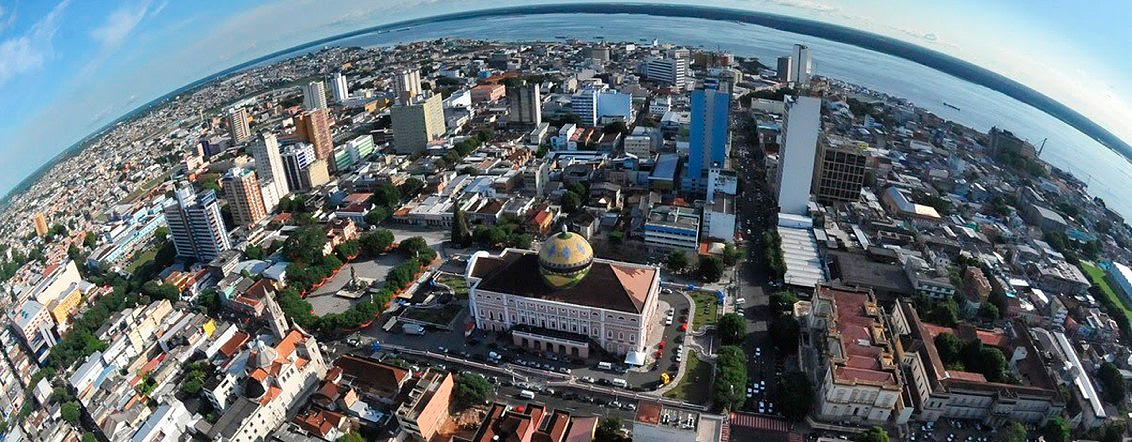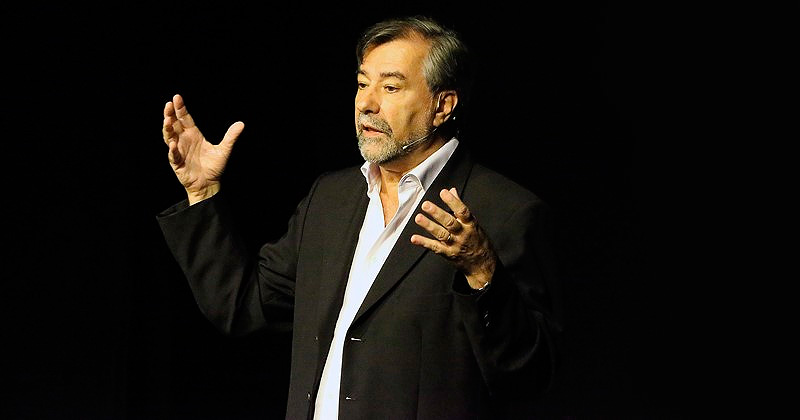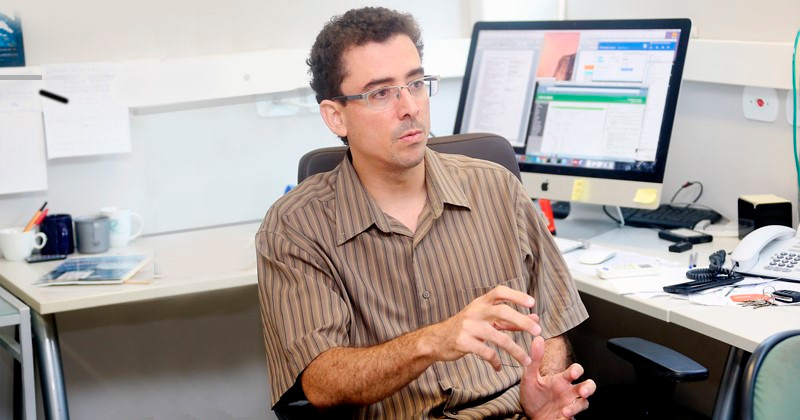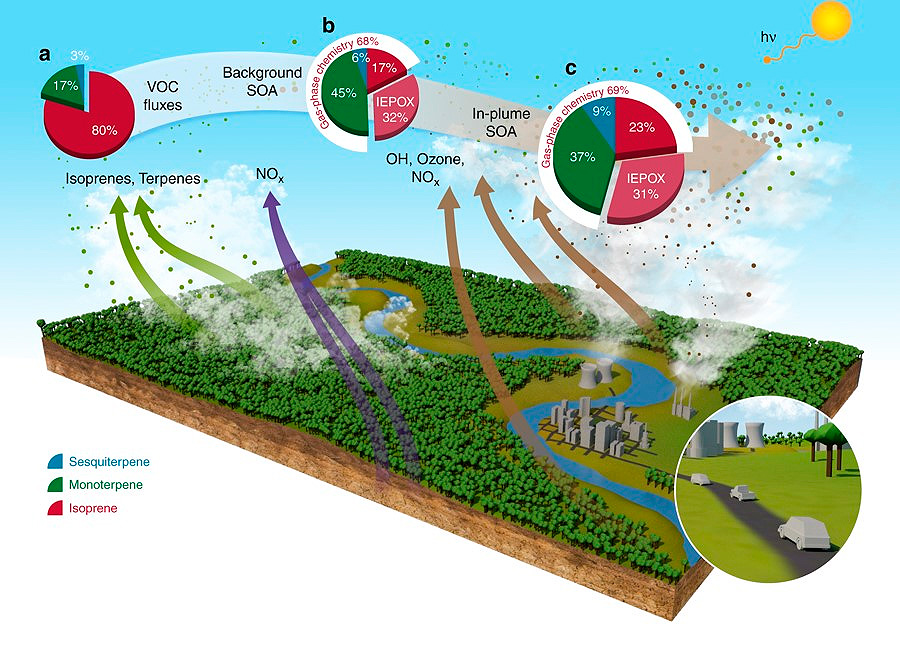Pollutants generate particles that alter the incidence of solar radiation, photosynthesis, and the process of rain formation

The impact of pollution emitted in Manaus City on the Amazon rainforest is revealed in international research with the participation of USP’s Institute of Physics (IFUSP). Manaus’ urban pollutants, carried by the wind, have substances that react with the composition of the Amazon atmosphere, giving rise to particles known as secondary aerosols. The measurements made in the study show that in the forest region there was increase of up to 400% in the production of secondary aerosols, which modify the incidence of the solar radiation on the forest, altering the rate of photosynthesis and the mechanisms of rain formation, among other effects. The research is described in an article published on the multidisciplinary science journal Nature Communications.
According to Professor Paulo Artaxo, from USP’s Institute of Physics (IFUSP), one of the authors of the article, the increased production of secondary aerosols in the forest is mainly caused by high emissions of nitrogen oxides (NOx) in Manaus. “The interaction of NOx with free radicals also produces high concentrations of ozone (O3), a strong phytotoxic pollutant, which affects the stomata of the leaves and reduces carbon absorption by the Amazon forest,” he added.

The work is one of the results of the GoAmazon 2014/15 experiment, which brings together researchers from Brazil, the United States, and Germany, and is supported by São Paulo Research Foundation, (FAPESP), Fundação de Amparo à Pesquisa do Amazonas (FAPEAM ), U.S. Department of Energy (DOE), and Germany’s Max Planck Institute. Professor Henrique Barbosa, from IFUSP, who also signs the article, declared: “The aim is to understand how the changes promoted by man can affect the clean atmosphere of the Amazon region, one of the few continental regions that still have preindustrial situations.” “During the rainy season, there are no fires and the atmosphere is very clean, with no comparison to the major urban centers’ air.”

According to Professor Barbosa, aerosols in the atmosphere can be primary or secondary. “Primaries aerosols are emitted as particles, such as dust, pollen and soot. Secondary aerosols are produced from gases that undergo chemical reactions in the atmosphere, condense and give rise to new particles, including volatile organic compounds (VOCs),” he reported. “In the Amazon, there are VOCs that are emitted by the vegetation in a natural way, such as isoprenes and terpenes. However, gases emitted by sources of pollution (NOx, for instance) oxidize in the atmosphere, condense and give rise to secondary aerosols.”
Earlier work from the GoAmazon 2014/15 experiment has shown the impact of very fine aerosol particles on the mechanisms of cloud formation and development. “The droplets that make up the clouds are formed by water vapor that is deposited in the aerosol particles suspended in the atmosphere,” Barbosa explained. “Studies have shown that Manaus’ pollution plume has high concentrations of ultrafine particles that greatly modify the properties of clouds. This new study was able to model the formation processes of these nanometric particles, and studies some of the effects of these particles on the ecosystem.”
In the Amazon, Manaus’ pollution, carried by the wind, caused increase of 60% to 200% in the production of aerosols, and in some cases it reached 400%. “The mechanisms responsible for this increase have been modeled and unveiled. The increase in the amount of aerosols produced by oxidizing anthropogenic (generated by human activity), besides modifying the clouds, also changes the way in which the solar radiation reaches the ground,” Artaxo said. “Higher level of aerosols spreads direct radiation and decreases the amount of energy available for plants to perform photosynthesis and absorb carbon. At the same time, there is increase in diffuse radiation, which penetrates more into the woods and favors photosynthesis, but this only occurs up to a certain level of aerosols.”
In high aerosol levels, the blockage of direct solar radiation is greater and harms photosynthesis performance by the forest, hampering carbon fixation, Professor Artaxo declared. “New studies will be developed to detail the effects of this large production of secondary aerosols,” he affirmed. “This will be done with airplane experiments in 2020, the Chemistry of the Atmosphere: Brazil Field Experiment (CAFE), and in measures that have been taken at the Amazon Tall Tower Observatory, a 320-meter tower in the middle of the forest.” All these experiments are supported by FAPESP thematic projects.

The paper Urban pollution greatly enhances formation of natural aerosols over the Amazon rainforest is signed by 36 authors, and nine are Brazilians, namely: Paulo Artaxo, Henrique Barbosa, Joel and Rita Ynoue, from USP; Eliane Gomes Alves and Rodrigo Souza, from Universidade do Estado do Amazonas (UEA); Helber Gomes, from Universidade Federal de Alagoas (UFAL); Adan Medeiros, from UEA and National Institute for Amazonian Research (INPA), and Suzane S. de Sá, from Harvard University, USA. The article has free access on the journal Nature Communications.
More information: e-mails artaxo@if.usp.br, with Professor Paulo Artaxo, and hbarbosa@if.usp.br, with Professor Henrique Barbosa
Júlio Bernardes / Jornal da USP
